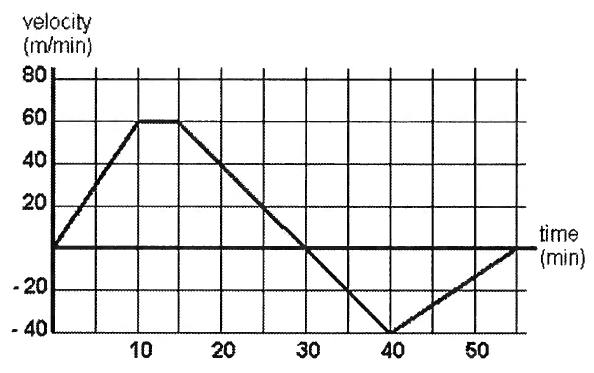HOW TO CONVERT RECURRING DECIMALS TO FRACTIONS
The following steps would be useful to convert recurring decimals to fractions.
Step 1 :
Make sure that there are only recurring digits after the decimal point.
Step 2 :
If there is only one digit in the recurring pattern, subtract 1 from 10, the result is 9.
Step 3 :
Take the recurring digit in the numerator and 9 in the denominator.
Step 4 :
Simplify the fraction, as needed.
Note :
If there are two digits in the recurring pattern, subtract 1 from 100, for three digits, subtract 1 from 1000 and so on. Continue the rest of the process as explained above.
Covert each of the following recurring decimals to fractions :
Example 1 :
0.33333..........
Solution :
There are only recurring digits after the decimal point in
0.33333..........
There is only one digit in the recurring pattern, that is 3.
Subtract 1 from 10, the result is 9.
Write a fraction with numerator 3 and denominator 9.
= 3/9
= 1/3
Example 2 :
0.77777..........
Solution :
There are only recurring digits after the decimal point in
0.77777..........
There is only one digit in the recurring pattern, that is 7.
Subtract 1 from 10, the result is 9.
Write a fraction with numerator 7 and denominator 9.
= 7/9
Example 3 :
0.36363636..........
Solution :
There are only recurring digits after the decimal point in
0.36363636..........
There are two digits in the recurring pattern, that is 36.
Subtract 1 from 100, the result is 99.
Write a fraction with numerator 36 and denominator 99.
= 36/99
= 4/11
Example 4 :
0.507507507507..........
Solution :
There are only recurring digits after the decimal point in
0.507507507507..........
There are three digits in the recurring pattern, that is 507.
Subtract 1 from 1000, the result is 999.
Write a fraction with numerator 507 and denominator 999.
= 507/999
= 169/333
Example 5 :
0.06666..........
Solution :
There is one digit between the decimal point and the recurring digits, that is 0.
0.06666.......... = (0.6666..........) ÷ 10 ----(1)
There are only recurring digits after the decimal point in
0.6666..........
There is only one digit in the recurring pattern, that is 6.
Subtract 1 from 10, the result is 9.
Write a fraction with numerator 6 and denominator 9 for 0.6666.......... in (1).
0.06666.......... = (6/9) ÷ 10
= (2/3) ÷ (10/1)
= (2/3) ⋅ (1/10)
= (2 ⋅ 1)/(3 ⋅ 10)
= 2/30
= 1/15
Example 6 :
0.00151515..........
Solution :
There are two digits between the decimal point and the recurring digits, that is 00.
0.00151515.......... = (0.151515..........) ÷ 100 ----(1)
There are only recurring digits after the decimal point in
0.151515..........
There are two digits in the recurring pattern, that is 15.
Subtract 1 from 100, the result is 99.
Write a fraction with numerator 15 and denominator 99 for 0.151515.......... in (1).
0.00151515.......... = (15/99) ÷ 100
= (5/33) ÷ (100/1)
= (5/33) ⋅ (1/100)
= (5 ⋅ 1)/(33 ⋅ 100)
= 5/3300
= 1/660
Example 7 :
0.37777..........
Solution :
There is one digit between the decimal point and the recurring digits, that is 3.
0.37777.......... = 0.3 + 0.07777..........
In 0.07777.........., there is one digit between the decimal point and the recurring digits, that is 0.
0.37777.......... = 0.3 + (0.7777..........) ÷ 10 ----(1)
There are only recurring digits after the decimal point in
0.7777..........
There is only one digit in the recurring pattern, that is 7.
Subtract 1 from 10, the result is 9.
Write a fraction with numerator 7 and denominator 9 for 0.7777.......... in (1).
0.39999.......... = 0.3 + (7/9) ÷ 10
= 3/10 + 7/90
= 27/90 + 7/90
= (27 + 7)/90
= 34/90
= 17/45
Example 8 :
1.21212121..........
Solution :
1.21212121.......... = 1 + 0.21212121.......... ----(1)
There are only recurring digits after the decimal point in
0.21212121..........
There are two digits in the recurring pattern, that is 21.
Subtract 1 from 100, the result is 99.
Write a fraction with numerator 21 and denominator 99 for 0.21212121.......... in (1).
1.21212121.......... = 1 + 21/99
= 1 + 7/33
= 33/33 + 7/33
= (33 + 7)/33
= 40/33
Example 9 :
2.342342342..........
Solution :
2.342342342.......... = 2 + 0.342342342.......... ----(1)
There are only recurring digits after the decimal point in
0.342342342..........
There are three digits in the recurring pattern, that is 342.
Subtract 1 from 1000, the result is 999.
Write a fraction with numerator 342 and denominator 999 for 0.342342342.......... in (1).
2.342342342.......... = 2 + 342/999
= 2 + 38/111
= 222/111 + 38/111
= (222 + 38)/111
= 260/111
Example 10 :
2.05555..........
Solution :
2.05555.......... = 2 + 0.05555.......... ----(1)
In 0.05555.........., there is one digit between the decimal point and the recurring digits, that is 0.
2.05555.......... = 2 + (0.5555..........) ÷ 10 ----(1)
There are only recurring digits after the decimal point in
0.5555..........
There is only one digit in the recurring pattern, that is 5.
Subtract 1 from 10, the result is 9.
Write a fraction with numerator 5 and denominator 9 for 0.5555.......... in (1).
2.05555.......... = 2 + (5/9) ÷ 10
= 2 + 5/90
= 2 + 1/18
= 36/18 + 1/18
= (36 + 1)/18
= 37/18
Kindly mail your feedback to v4formath@gmail.com
We always appreciate your feedback.
©All rights reserved. onlinemath4all.com
Recent Articles
-
Digital SAT Math Problems and Solutions (Part - 150)
Apr 25, 25 11:46 AM
Digital SAT Math Problems and Solutions (Part - 150) -
AP Calculus AB Problems with Solutions (Part - 19)
Apr 24, 25 11:10 PM
AP Calculus AB Problems with Solutions (Part - 19) -
AP Calculus AB Problems with Solutions (Part - 18)
Apr 24, 25 11:06 PM
AP Calculus AB Problems with Solutions (Part - 18)
